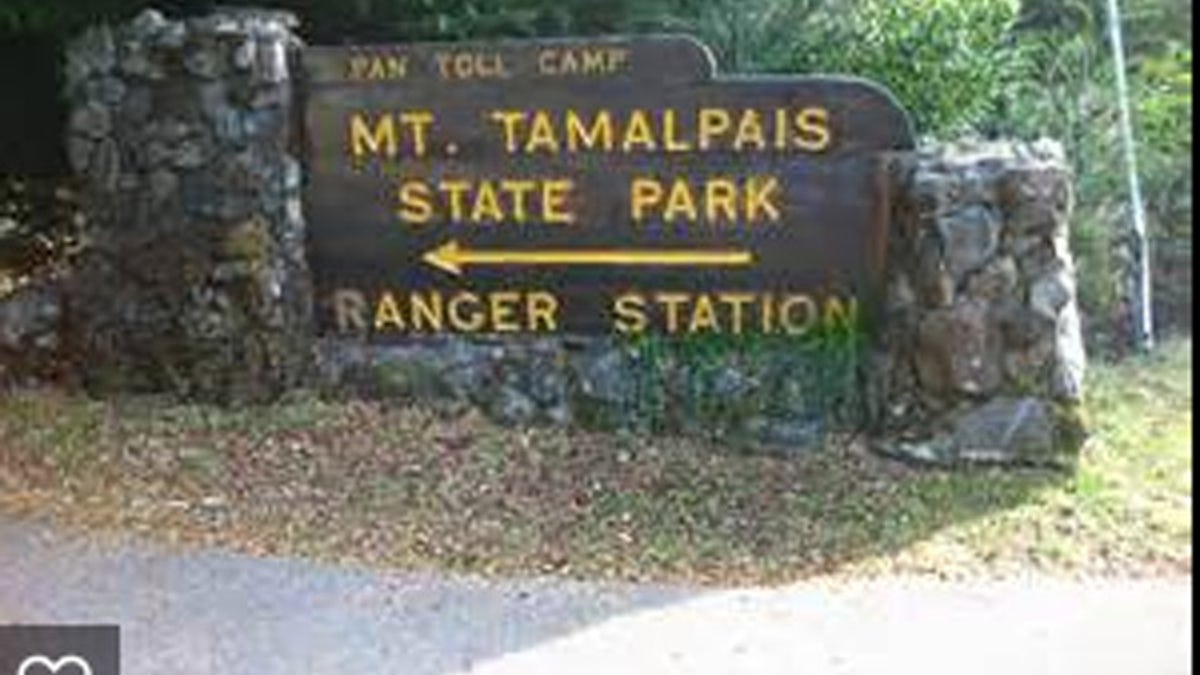
Cycling family: Robin Huffman, on a trail outside of Marin County. (Courtesy: Vernon Huffman)
Cyclists on one of North America’s most legendary bike paths have more to worry about than flat tires and slipped chains: Radar gun-wielding rangers on Northern California’s Mount Tamalpais will soon begin enforcing a strict 15-mile-per-hour speed limit.
The picturesque preserve in Marin County, just north of San Francisco, is seen by many as the birthplace of mountain biking, with a maze of winding routes that take cyclists through forests, atop spectacular peaks, and down paths at speeds topping 30 miles per hour. County parks officials say the speeding bikes could put hikers and horseback riders at risk.
“If trail users simply treat each other with mutual respect, we could all get along and have a great time in the woods.”
“We don’t have good data about how often speeding is occurring on Open Space Trails and this effort will provide good data about speeding in our preserves,” Max Korten, acting assistant director of Marin County Parks, told FoxNews.com.

Gabrielle Huffman, 15, is on the San Domenico High School Mountain Bike Team, and regularly trains on Mount Tamalpais. (Courtesy: Vernon Huffman)
The first step is to gauge the problem by equipping rangers with LiDAR, a laser-style speed-tracking technology, he said. For now, they will only issue written warnings, but ticket-writing could soon follow. A citation would go on the violator’s DMV record, and fines could reach $100.
Cyclists say speed limits on bike paths are silly and unnecessary.

Some consider Mount Tamalpais to be the birthplace of mountain biking.
“Marin County Parks has deemed radar necessary to show concerned parties, mainly the ‘foot people’ that safety on the trials is priority,” said Vernon Huffman, president of Access4Bikes, a Marin County non-profit organization whose mission is the “fair and reasonable” access to the local trails. “But Marin County Parks can’t name one single past incident that radar would have prevented.”
Korten acknowledged that the trails are relatively safe, but said a reasonable speed limit could keep it that way.
“We have had a few incidents of collisions between bike riders and pedestrians or equestrians, but those incidents are relatively rare when compared with the high level of use occurring on our trails,” Korten said.

Huffman, shown here on a trail in Marin County, believes enforcing speed limits is a waste of time and money. (Courtesy: Vernon Huffman)
Mount Tamalpais in the late 1970s became known as the cradle of mountain biking, providing the soil and swells for some of the country’s top racers. Yet in recent decades, bikers have lamented the rise of legislation and banning of bikes from the vast majority of single-track trails in Marin County.
“If trail users simply treat each other with mutual respect, we could all get along and have a great time in the woods,” said Greg Heil, editor-in-chief of the website Singletracks.com. “There are thousands of miles of multi-use trails across the country where mountain bikers peacefully co-exist with others. Less than one percent of these trails have a posted speed limit, much less rangers with radar guns enforcing them.
“What I do see from this unfortunate waste of taxpayer dollars is that Marin continues to cement itself as one of the least mountain bike friendly locations in the nation,” he added.
Chris Edwards, editor of DownsizingGovernment.org and an expert at the public policy-centered Cato Institute, agreed that setting speed traps for cyclists is a classic case of local government overreach.
“Park agencies are always complaining that they have a shortage of funding, but the Marin County effort to prevent mountain bikers from having fun shows that it has money to burn,” he said.
Marin County has implemented speed limit enforcement on paved bike paths since 2015 and claims that “this effort combined with a signage and education initiative lead to a significant reduction” of speed. Sheriff’s deputies in the area reportedly have issued more than 60 citations and warnings. Rangers also patrol popular off-road trails in California’s East Bay and other areas in the state are known for their ranger presence.
“Through our road and trail management plan we are considering proposals to open new trails to mountain bike use and want to have a tool to address safety concerns from hikers and equestrians regarding the potential bike use on these trails,” Korten said. “We hope that bicycle use is not deterred by this effort, but that all of our visitors including those on bicycles will be more likely to visit our preserves knowing that other users will conduct themselves in a safe manner.”

